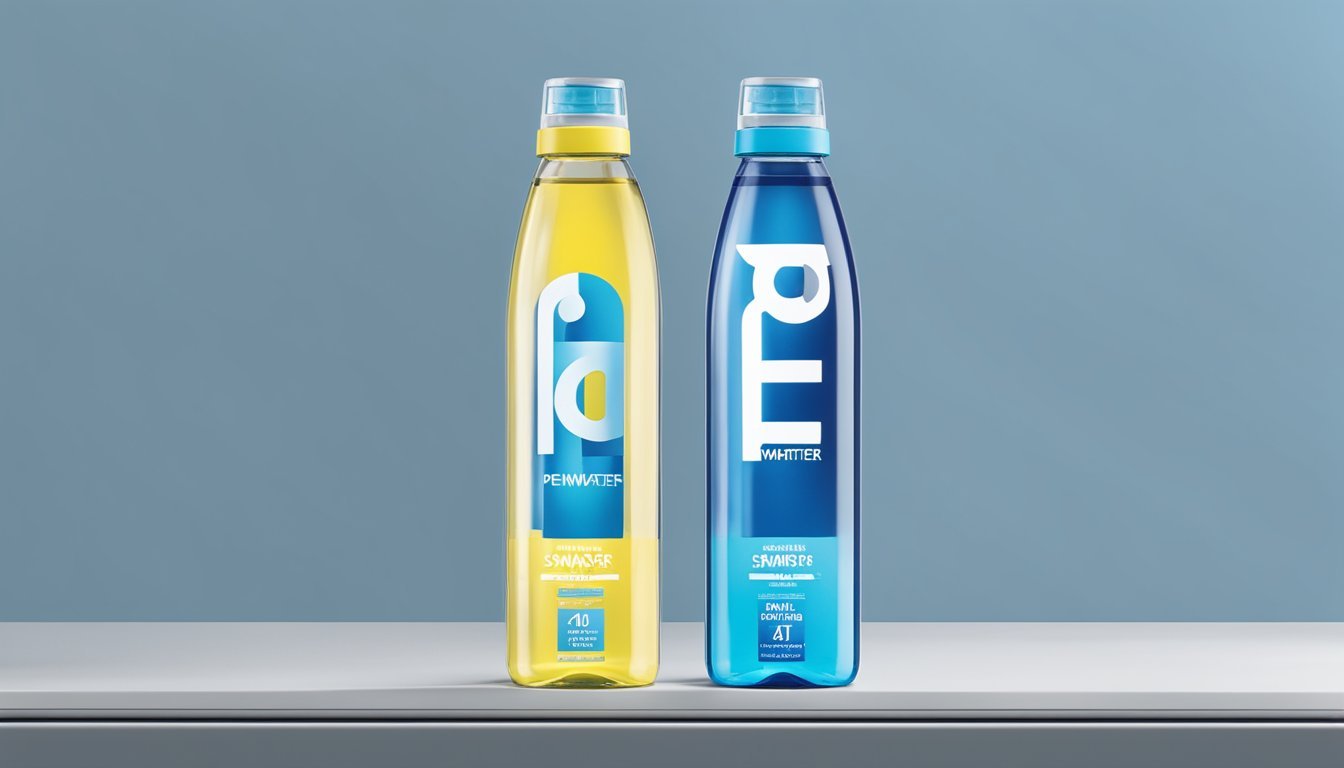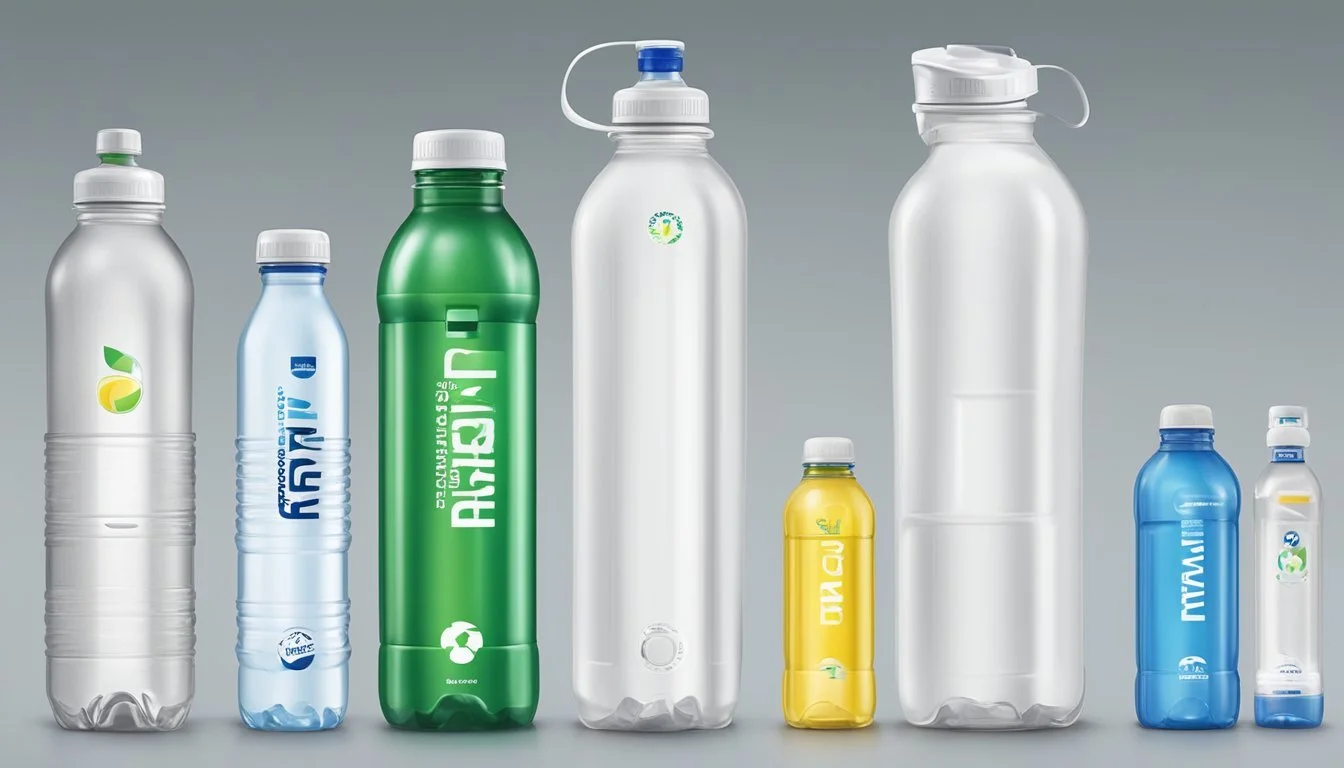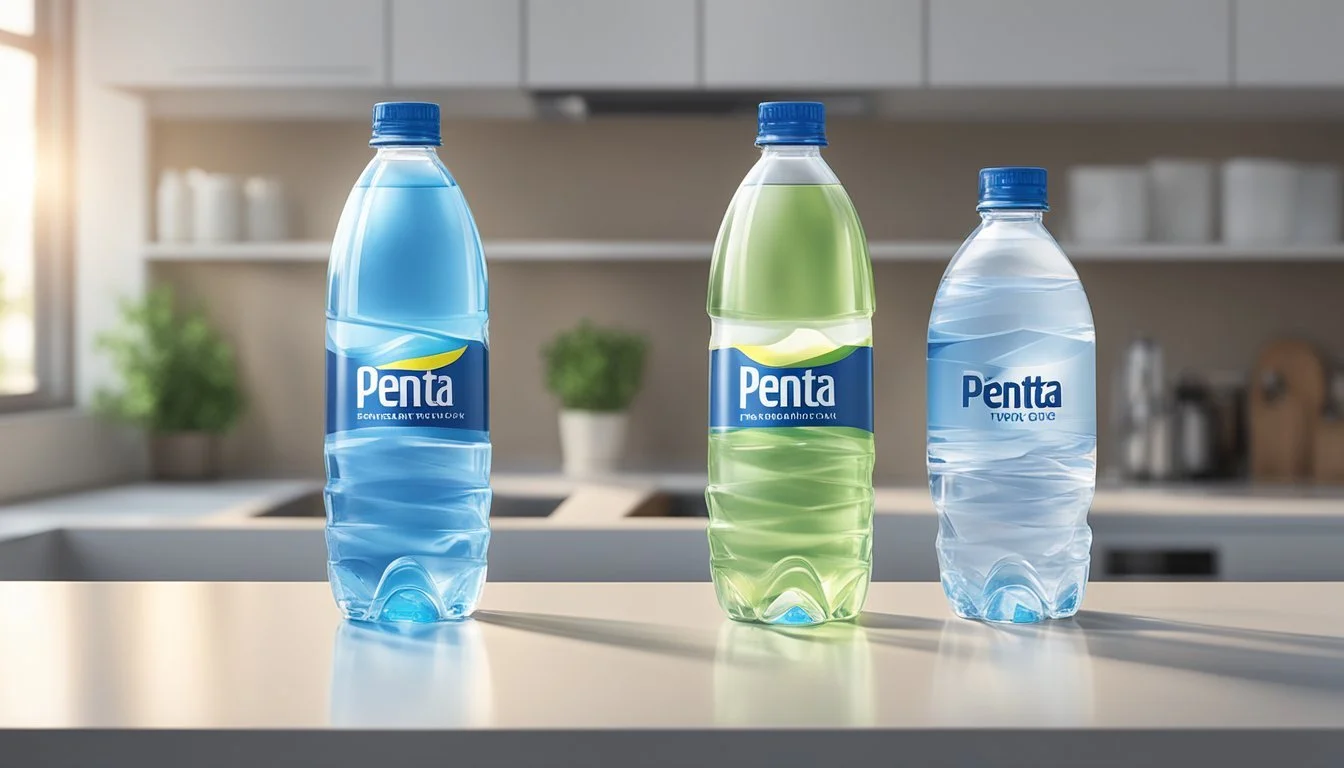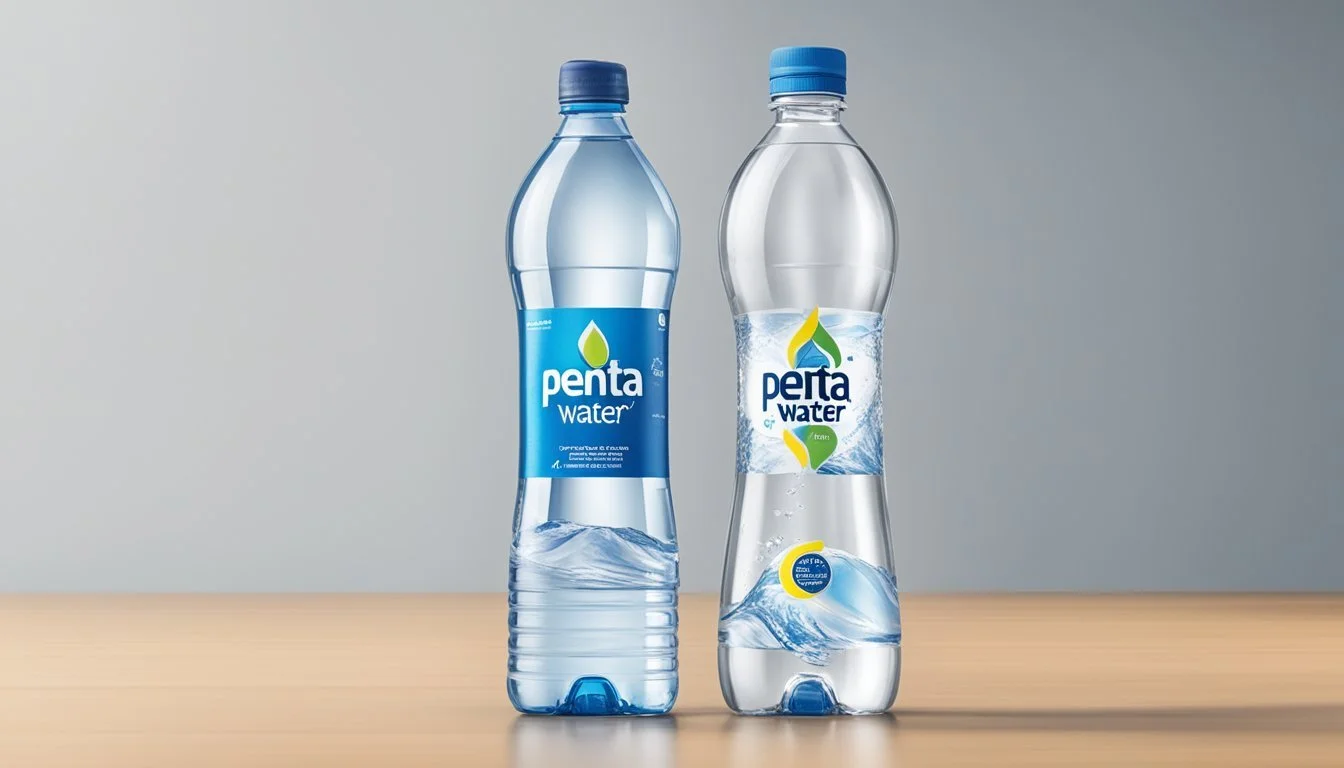Penta vs. Smartwater
A Comprehensive Comparison of Bottled Waters
When it comes to staying hydrated, consumers often turn to bottled water for its convenience and perceived purity. Among the numerous brands available, Penta and Smartwater have emerged as popular choices. Penta touts itself as ultra-purified water that undergoes a patented 13-step purification process, while Smartwater is vapor-distilled with added electrolytes for taste. Both brands promise superior quality, but the question remains: which bottled water is better?
Evaluating bottled water involves considering sources, purification processes, taste, and the presence of additives or minerals. Penta’s rigorous purification claims to eliminate more impurities compared to conventional filtration methods, resulting in water with a neutral pH. On the other hand, Smartwater’s vapor distillation mimics the hydrologic cycle, which is then supplemented with a blend of electrolytes like calcium, magnesium, and potassium for a distinctive taste.
The choice between Penta and Smartwater may come down to personal preference in taste and commitment to purity. For those who prefer their water with a mineral balance that enhances taste, Smartwater may be the go-to option. Conversely, consumers seeking water that is stripped of nearly all minerals and impurities might lean toward Penta. In either case, both brands offer distinct qualities that claim to cater to the health-conscious and hydration-aware market.
Overview of Bottled Water
Bottled water is a ubiquitous hydration option often chosen for its convenience and perceived purity over municipal water. Consumers are faced with an array of water brands that differ based on their source, treatment, and taste. Bottled water typically falls into categories such as spring water, purified water, mineral water, and sparkling water.
Spring Water: Sourced from natural springs, this water is esteemed for retaining its minerals.
Purified Water: Treated municipal water, cleared of chemicals and contaminants through processes like reverse osmosis.
Mineral Water: Contains natural minerals and trace elements, acquired from underground sources.
Sparkling Water: Infused with carbon dioxide for effervescence, often sourced from springs or wells.
Brands vary in recognition and quality, with some commanding a premium due to their origin or treatment process. The perception of water brands influences consumer choice, guided by taste, purity, and the presence of added minerals.
Hydration is essential to health, and many turn to bottled water for their daily water intake needs. Bottled water provides a portable and, in some cases, safer alternative to tap water, especially in areas where municipal water may not meet safety standards. Nevertheless, the environmental impact of bottled water, due to plastic use and transportation, is a point of consideration for consumers.
Natural water sources like springs are often marketed as being in a pristine state, but the bottling process and potential contamination are factors savvy consumers bear in mind. Each brand's water source and filtration standards can affect the quality of the final product.
Comparing Penta and Smartwater
Penta and Smartwater are both prominent brands in the bottled water market, and they each bring specific qualities to consumers who are conscious about their hydration choices.
Penta water prides itself on its ultra-purified drinking water. Using a patented 13-step purification process, which involves reverse osmosis and UV light treatment among others, Penta claims to provide a water that is free from impurities, pollutants, and chemicals. As for its pH level, Penta water typically is neutral with a pH of approximately 7.
In contrast, Smartwater is a product by The Coca-Cola Company. This brand offers vapor-distilled water with added electrolytes for taste. Smartwater is also purified through distillation, and similar to Penta, it is free from contaminants. The addition of electrolytes such as calcium chloride, magnesium chloride, and potassium bicarbonate is what sets Smartwater apart, giving it a distinctive taste. The pH of Smartwater is typically reported to be slightly alkaline, though the exact level can vary.
Feature Penta Smartwater Purification 13-step process including reverse osmosis Vapor distillation pH Level Neutral (Approx. 7) Slightly alkaline Electrolytes None Calcium chloride, magnesium chloride, and potassium bicarbonate Source Various Various Alkalinity Neutral pH Slightly alkaline
The sources of both brands are diverse, and the water undergoes extensive filtration to ensure purity. While Penta focuses on the purity and a neutral pH, Smartwater emphasizes its vapor-distillation process and the addition of electrolytes, which may appeal to those who enjoy a slightly enhanced flavor or are looking for a small post-workout mineral replenishment.
Both brands fall under the category of purified water, with their own approaches to providing clean and refreshing bottled water. The choice between Penta and Smartwater typically rests on personal preference for taste and the importance of added electrolytes.
Health and Hydration Benefits
In considering the benefits of Penta and Smartwater for hydration, one must evaluate the presence of electrolytes and the pH levels of these waters, as they significantly influence overall hydration effectiveness.
Role of Electrolytes
Electrolytes are minerals that conduct electricity when dissolved in water. They are essential for maintaining hydration as they help regulate fluid balance within the body. Penta water typically does not contain added electrolytes, as it focuses on ultra-purification. Smartwater, on the other hand, is enhanced with a selection of electrolytes, such as magnesium chloride, calcium chloride, and potassium bicarbonate for taste and replenishment purposes. However, the levels of these minerals are relatively low and are present more for taste rather than replenishment after serious electrolyte depletion.
Magnesium: Helps with nerve function and muscle relaxation.
Calcium: Important for bone health and muscle function.
Potassium: Key in muscle contractions and nerve signals.
Sodium: Vital for fluid balance and nerve function.
These minerals assist in maintaining a delicate balance within the body, critical to physiological processes, including muscle contractions, nerve signaling, and hydration.
Understanding pH Levels
The pH level of water indicates how acidic or basic (alkaline) it is on the pH scale of 0 to 14, where 7 is considered neutral. Penta water boasts a neutral pH, typically close to 7, aligning with the body's natural pH balance. Smartwater also claims a neutral pH, but has introduced variants like "Smart Water Alkaline" which has a higher pH, typically around 9. While some sources claim that alkaline water can help with acid reflux and provide better hydration, these assertions lack substantial scientific backing. It is generally accepted that neutral pH water supports natural body functions effectively without disrupting the body’s acid-base balance.
Penta: Neutral pH, close to 7.
Smartwater: Neutral or higher pH in alkaline variant.
It is essential to recognize that for most individuals, drinking water of neutral pH will support adequate hydration and contribute to overall health, regardless of whether it's from Penta, Smartwater, or another clean source.
Water Sources and Purification Methods
Selecting the right bottled water often comes down to understanding the sources of water and the methods used to purify it.
Natural Springs vs Municipal Sources
Penta water is sourced from natural springs, characterized by its journey through mineral-rich layers of rock which can impart various minerals to the water and affect its taste. In contrast, Smartwater starts with municipal sources, typically undergoing a more rigorous purification process to ensure consistency and purity.
Natural Spring: Penta collects its water from springs which naturally filter the water and can provide a unique mineral composition.
Municipal Source: Smartwater relies on municipal water which is treated to remove chlorine and other impurities before further purification.
Reverse Osmosis and Filtration Techniques
Both Penta and Smartwater utilize advanced filtration processes to ensure the purity of their water. The key method employed is reverse osmosis.
Penta:
Employs a patented filtration process that includes high-capacity reverse osmosis.
The process removes impurities to produce water that is free from contaminants, resulting in ultra-pure water.
Smartwater:
Begins with vapor distillation, which simulates the hydrologic cycle to remove impurities.
It includes an additional process involving reverse osmosis and is enhanced with electrolytes for taste.
Both brands prioritize the removal of undesired constituents while aiming to deliver high-quality purified water to the consumer.
Taste Profile Analysis
When analyzing the taste profiles of Penta and Smartwater, it's essential to consider several factors that contribute to their unique flavors. The process by which the water is purified and any additional enhancements play a significant role in defining the taste that consumers experience.
Penta Water boasts a proprietary purification process. This process includes:
Multiple stages of filtration
Patented physics-based process to reduce the water molecule size
The result is a very clean, pure taste that Penta claims to be free from chemicals, pollutants, and impurities. This thorough filtration process is designed to strip the water of any elements that can alter its taste, aiming for a neutral profile.
Smartwater, on the other hand, is vapor-distilled, which simulates the hydrologic cycle, and is known for its:
Crisp, refreshing taste
Electrolytes for taste which are infused after distillation
The addition of electrolytes is intended not just for a better taste but also to provide a mouthfeel that is slightly different from typical distilled water. This often gives Smartwater a characteristically smooth and balanced flavor.
In summary, while Penta emphasizes purity in its taste creation, Smartwater focuses on providing a taste profile enhanced with electrolytes. It's important to note that taste is subjective, and preference between these two brands may vary among individuals.
Brand Purification Method Taste Notes Penta Proprietary filtration Clean, pure, minimalistic Smartwater Vapor-distilled, electrolytes added Crisp, smooth, balanced
Packaging and Environmental Considerations
When considering bottled water options, one must take into account both the packaging materials used and the environmental footprint left behind. This section delves into the specific packaging components and sustainability practices of Penta and Smartwater.
Plastic Usage and BPA Content
Penta: Utilizes BPA-free bottles which are designed to reduce exposure to bisphenol A, a chemical commonly found in plastics that may have adverse health effects.
Smartwater: Also offers BPA-free plastic bottles, aligning with consumer demands for safer packaging.
Recyclability and Sustainability Impact
Penta: Focuses on sustainability by ensuring bottles are 100% recyclable. They stress the importance of recycling to lessen the environmental impact.
Smartwater: Manufactures bottles that are recyclable. Smartwater has also introduced plant-based renewable plastic bottles as a step toward improved sustainability.
Brand Comparisons and Market Varieties
In the landscape of bottled water brand comparison, the focus rests upon dissecting the positions of market leaders and understanding the hierarchy that ranks these brands from least to most favorable.
Analysis of Market Leaders
Within the industry, Penta and Smartwater (Glaceau Smartwater) are established entities, often benchmarked for their quality and marketing strategies. Smartwater, a subsidiary of Coca-Cola, has positioned itself as a premium brand by pioneering the vapor-distillation process, coupled with electrolyte enhancement for taste. Penta, less prominent in the public eye yet notable for its claims of ultra-purified water with a patented 13-step purification process, stands as a worthy competitor. Other brands like Fiji and Evian follow close behind, with Fiji promoting its natural artesian water source and Evian its French alpine origin.
Dasani (by Coca-Cola) and Aquafina (by PepsiCo), despite their strong market presence, have faced critique for being essentially purified municipal water.
Nestlé’s Pure Life is known for its international reach and affordability, while Voss presents itself as a premium brand from Norway touting an artesian source.
Names such as Essentia, Lifewtr, and Core Hydration have differentiated themselves by emphasizing their alkaline and electrolyte-enhanced profiles.
From Worst to Best: Ranking Bottled Water
The ranking of bottled water brands often fluctuates based on source, taste, and health benefits.
Evian and Fiji are frequently lauded for their taste, attributable to their natural minerals and source purity.
Essentia boasts a 9.5pH level, catering to those seeking alkaline water.
Bottled waters such as Deer Park, Arrowhead, and Zephyrhills are recognized for their regional spring sources.
Nestlé’s Pure Life and Aquafina usually rank lower due to the perceptions surrounding their purification of tap water.
Mountain Valley Spring Water and Icelandic Glacial are known for coming from protected natural springs and have a dedicated following for their taste as well as their respective unique volcanic rock and Icelandic origins.
The eco-conscious consumer might lean towards Just Water and Boxed Water for their reduced plastic use.
Rankings can also consider packaging innovation; Life Wtr and Eternal Water reflect this with their unique art designs and eco-friendly bottles. Meanwhile, the impact of the bottle design itself can be seen with Core Hydration, recognized for its contoured bottle that aligns with hydration needs.
Health Risks and Contaminants
When comparing Penta and Smartwater, it's essential to examine the potential health risks and levels of contaminants present in these bottled water brands. Consumers should be aware of the presence of heavy metals and the balance of fluoride, as well as by-products from disinfection processes used to ensure the water's safety.
Heavy Metals and Contaminant Levels
Penta Water prides itself on using a patented process for removing impurities which includes multiple steps of filtration and purification. They claim this process removes more contaminants than standard filtration methods. Specifically, Penta Water is tested for the absence of heavy metals such as lead, arsenic, and mercury.
Smartwater, on the other hand, undergoes vapor distillation, a process where water is turned into steam and then condensed back into liquid. This method is effective at minimizing the presence of contaminants found in typical sources of drinking water. It's worth noting that both brands typically comply with the regulated levels of contaminants set by the FDA and the EPA.
Fluoride and Disinfection by-products
Fluoride is a component that can naturally occur in water and is sometimes added for dental health benefits. Penta Water does not contain added fluoride, aiming for a composition that matches the body’s natural pH. Smartwater, while also ensuring it meets regulatory standards, maintains a level of fluoride that falls within the acceptable ranges set by health authorities.
Disinfection by-products (DBPs) are another consideration when analyzing water purity. These are formed when disinfectants used to purify water react with natural organic compounds. While both Penta and Smartwater employ methods to reduce these by-products, consumers should be aware they may still be present in trace amounts, as is the case with most bottled waters.
The Role of Water in Athletic Performance
Proper hydration is crucial for athletes as it directly impacts their performance and recovery. During physical activity, an athlete's body temperature increases, leading to sweating as a mechanism to cool down. Water is essential in this process, helping to regulate body temperature and quench their thirst.
Athletes need to maintain hydration for several reasons:
Thermoregulation: Water assists in maintaining a safe core body temperature.
Nutrient transport: It facilitates the delivery of nutrients and oxygen to cells.
Joint lubrication: Adequate hydration helps to protect joints and tissues.
Minerals and electrolytes, such as sodium and potassium, are lost through sweat. These play a pivotal role in muscle function and fluid balance. Replacing them is essential, especially in endurance sports or activities in hot and humid environments. While water effectively rehydrates, the inclusion of electrolytes in a sports drink can further assist in replenishment and prevent imbalances.
Athletes should tailor their hydration strategy to the intensity and duration of their exercise, environmental conditions, and sweat rate. Balancing water intake with necessary minerals and electrolytes ensures they can perform at their best and recover efficiently.
Innovations in Water Enhancement
Bottled water brands have introduced innovations to enhance the quality and health benefits of their products. These enhancements range from changing the pH level to adding health-promoting nutrients.
Alkalization and Ionization
Alkaline water has a higher pH level compared to regular drinking water. Brands like Smartwater have developed alkaline versions with a pH of 9 or higher. The process typically involves ionization, where water undergoes electrolysis to separate acidic and alkaline components. Ionization can also help to supercharge the water with negative ions, leading to water that supporters claim can better hydrate and neutralize the body's acidity.
Added Minerals and Vitamin-infused Options
Water brands often embed additional health benefits by fortifying their products with essential minerals and electrolytes, such as potassium and magnesium. For example, Penta includes water that is both purified and infused with electrolytes for taste and hydration enhancement. Brands may also offer vitamin-infused options, infusing water with vitamins such as B or C, catering to those looking to increase their vitamin intake. These added minerals and vitamin-infused options create a product that supports active lifestyles and provides a more nutrient-dense alternative to standard bottled water.
Consumer Insights and Preferences
When it comes to bottled water, consumers often have distinct preferences that revolve around taste, hydration, and the perceived quality of the water. Penta and Smartwater are two brands that stand out in the market, and they cater to specific consumer tastes and hydration needs.
Penta is known for its ultra-purified drinking water. It undergoes a patented 13-step purification process that includes filtration and ozonation, resulting in water that is free from impurities and contaminants. Consumers who prioritize purity tend to lean towards Penta. They often report a clean and crisp taste, which is attributed to the thorough purification process.
On the other hand, Smartwater is vapor-distilled with added electrolytes for taste. The brand has positioned itself as providing not just hydration but also a taste profile that is refreshing and satisfying. The addition of electrolytes is intended to enhance the water's taste and make it akin to the natural taste found in high-quality spring water.
Consumer preferences can be summarized as follows:
Brand Taste Hydration Quality of Water Penta Clean, neutral High Ultra-pure, contaminant-free Smartwater Enhanced with electrolytes High Vapor-distilled, electrolyte-infused
Consumers may choose between Penta and Smartwater based on these distinct offerings. Those seeking pure, untainted water often gravitate towards Penta, while those who prefer a light flavor enhancement backed by electrolytes might favor Smartwater. Both brands offer high hydration levels and a high-quality water experience, but their approach to achieving this is what sets them apart in the eyes of consumers.
Conclusion
When comparing Penta and Smartwater, potential consumers may consider several factors to determine which bottled water is the better choice for them. Both brands have carved out their own niche within the bottled water market, catering to different consumer needs and preferences.
Penta prides itself on offering water with a higher pH level. Typically, water with a higher pH is considered by some to carry a number of health benefits, although these claims are often debated in the scientific community. Penta's purification process is designed to ensure the water's purity and consistency in taste.
Smartwater, on the other hand, is vapor-distilled and contains added electrolytes, designed to mimic the taste and electrolyte balance of natural spring water. These added electrolytes can be essential for those looking to replenish after intense physical activity or to simply quench their thirst.
Penta
High pH level
Consistent taste
Pure
Smartwater
Added electrolytes
Spring-like taste
Replenishing
As there is no one-size-fits-all answer to which is the best bottled water, consumers may base their decision on whether they prefer the potentially beneficial higher pH level of Penta or the added electrolytes in Smartwater that may better meet their hydration needs. It ultimately comes down to personal preference, as both brands offer a quality product designed to quench your thirst. The choice between Penta and Smartwater should be based on individual taste and how the body feels after hydration.







